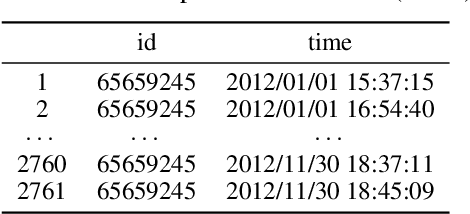Yuecheng Zhang
Multimodal Chain-of-Thought Reasoning: A Comprehensive Survey
Mar 16, 2025Abstract:By extending the advantage of chain-of-thought (CoT) reasoning in human-like step-by-step processes to multimodal contexts, multimodal CoT (MCoT) reasoning has recently garnered significant research attention, especially in the integration with multimodal large language models (MLLMs). Existing MCoT studies design various methodologies and innovative reasoning paradigms to address the unique challenges of image, video, speech, audio, 3D, and structured data across different modalities, achieving extensive success in applications such as robotics, healthcare, autonomous driving, and multimodal generation. However, MCoT still presents distinct challenges and opportunities that require further focus to ensure consistent thriving in this field, where, unfortunately, an up-to-date review of this domain is lacking. To bridge this gap, we present the first systematic survey of MCoT reasoning, elucidating the relevant foundational concepts and definitions. We offer a comprehensive taxonomy and an in-depth analysis of current methodologies from diverse perspectives across various application scenarios. Furthermore, we provide insights into existing challenges and future research directions, aiming to foster innovation toward multimodal AGI.
Learning under Commission and Omission Event Outliers
Jan 23, 2025



Abstract:Event stream is an important data format in real life. The events are usually expected to follow some regular patterns over time. However, the patterns could be contaminated by unexpected absences or occurrences of events. In this paper, we adopt the temporal point process framework for learning event stream and we provide a simple-but-effective method to deal with both commission and omission event outliers.In particular, we introduce a novel weight function to dynamically adjust the importance of each observed event so that the final estimator could offer multiple statistical merits. We compare the proposed method with the vanilla one in the classification problems, where event streams can be clustered into different groups. Both theoretical and numerical results confirm the effectiveness of our new approach. To our knowledge, our method is the first one to provably handle both commission and omission outliers simultaneously.
 Add to Chrome
Add to Chrome Add to Firefox
Add to Firefox Add to Edge
Add to Edge